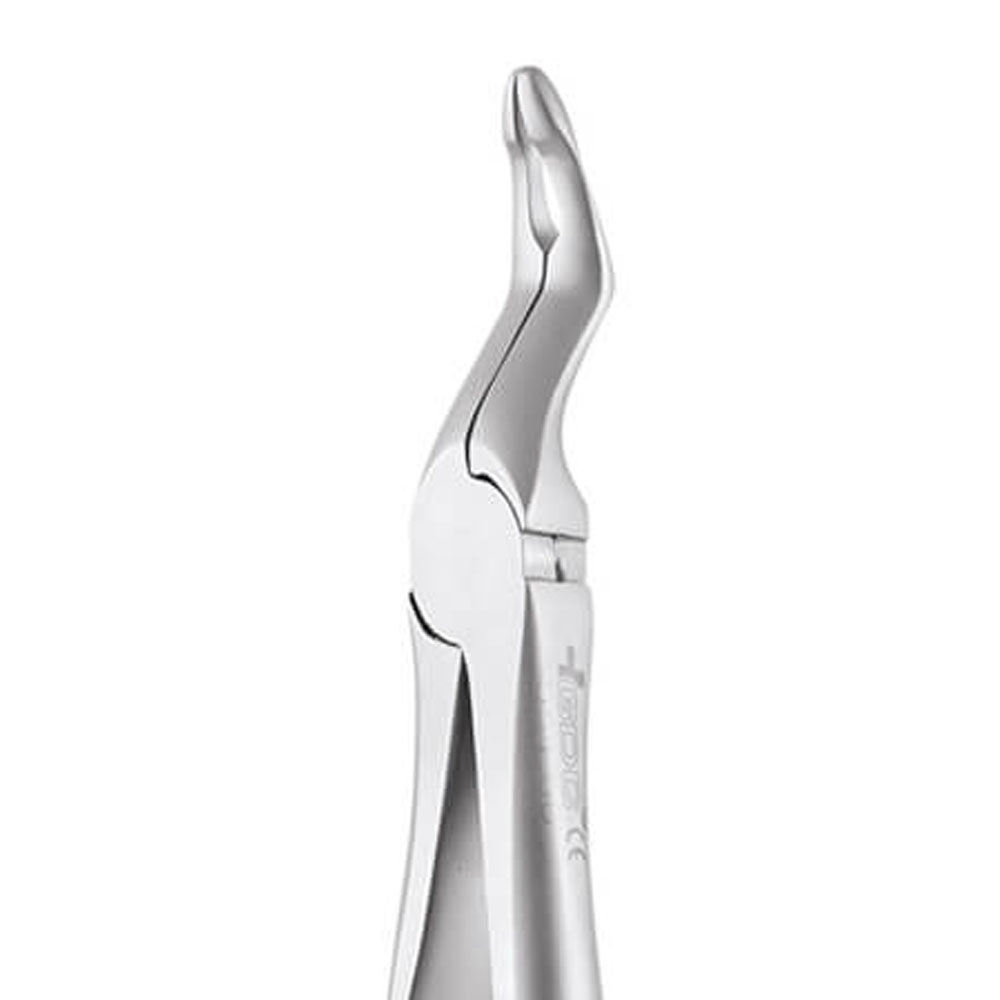GDC Extraction Forceps Upper Roots – 951.00 Secure (Sfx951.00)
10 in stock
Extraction Forceps for Upper Roots extraction
$19.38 $28.13
10 in stock
Tooth Extraction Forceps Upper Roots is extraction forceps ideally used in the extraction of Maxillary upper Root stumps
GDC Extraction Forceps is a perfect need for extractions in minor oral surgery.
Tooth Extracting forceps are used to extract teeth designed for use in specific areas of the mouth. The beak is shaped to conform snugly to the contour of the tooth. This makes it easier to reach different teeth effectively. Dental forceps handles are shaped so that a maximum amount of force can be applied to the beaks, while the handles are still in a comfortable position for the oral surgeon.
Contra-angled design of handles & beaks.
Narrow beaks for extraction of maxillary roots.
Advantages of this design of forceps :
- Made to obtain good access in the posterior region
- Prevent injury to the lower lip
IDEAL REQUIREMENT OF EXTRACTION FORCEPS:
In clinical cases of:
- Root stump or root pieces
- Grossly decayed tooth
Instrument Name: Upper Root Forcep
Type: Dental Tooth Extraction Forcep
Category: Oral Surgery
Material: Stainless Steel
Packaging
- 1 x GDC Extraction Forceps Upper Roots – 951.00 Secure (Sfx951.00)
Features
- Made of High-grade Stainless Steel
- Easy to use
- Thin anatomic ends
- Ergonomic Design –
- handles – Better Grip
- Sharp Rounded Beaks – Better Adaptation to root surface
Cut PDL easily
- Large handles – Better Operator fit
- Concave Inner Surface to fit the root
- Close Fitting Forcep Blades – spread the load evenly
- Corrosion Resistant – Passivated
Directions to use
Maxillary forceps must be held in a ‘palm up’ position and mandibular forceps must be held in a ‘palm down position.
These forceps majorly apply five different motions.
- Apical pressure: With the force in this direction, the tooth movement is minimal in the apical direction; however, the socket expands
due to the insertion of beaks in the periodontal ligament space. Also, the center of rotation of the tooth displaces apically, resulting in less amount of force at the apical portion of the root preventing it from getting fractured.
- Buccal/Labial pressure: This results in expansion of the buccal cortical plate, specifically at the crest of the ridge. However, at the same time,
it results in lingual apical pressure. However, excessive pressure must be avoided to prevent fracture of the buccal bone and the apical portion of the root.
- Palatal/Lingual pressure: Similar to the buccal/labial pressure, but in opposite direction aiming in the expansion of lingual cortical plate.
- Rotational pressure: Here the tooth is rotated resulting in internal socket expansion and tearing of periodontal ligaments. This force must only be
applied to the teeth with single and conical roots. Teeth with multiple or dilacerated roots are prone to fracture on the application of this force.
- Tractional forces: This delivers the tooth out of the socket. This force should be gentle and the tooth should not be pulled out of the socket.
However, if excessive force is required, other maneuvers must be carried out to improve luxation.
For maxillary extraction
Regarding the chair,
chair should be tipped backward so that the maxillary occlusal plane is at an angle of
about 60 degrees to the floor.
Raise the patient’s legs to help improve the patient’s comfort.
The height of the chair should be such that the patient’s mouth is at or slightly below the
operator’s elbow level.
The chair should be lower for the extraction of maxillary teeth.
During an operation on the maxillary right quadrant
the patient’s head should be turned substantially toward the operator so that adequate
access and visualization can be achieved.
For extraction of teeth in the maxillary anterior portion of the arch.
the patient should be looking straight ahead.
For the maxillary left portion of the arch,
the patient’s head is turned slightly toward the operator.






There are no reviews yet.